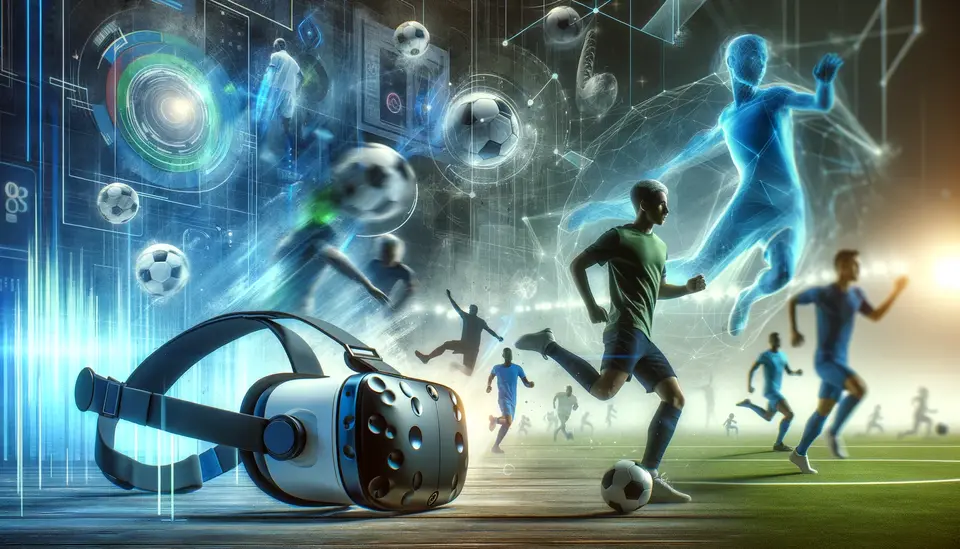Virtual reality (VR) is increasingly being adopted in the sports industry, providing athletes and coaches with innovative tools for training, performance analysis, and injury rehabilitation. By creating immersive environments that simulate real-game scenarios, VR enhances athletic performance and aids in the development of essential skills. This article explores the applications of VR in sports, its benefits, challenges, and future potential.
Applications of VR in Sports
Skill Development: VR enables athletes to practice specific skills in a controlled environment, allowing them to refine techniques without the physical limitations of traditional training methods.
Example: Quarterbacks can use VR to practice reading defenses and making decisions, simulating game scenarios and improving their reaction times.
Game Simulation: Coaches can use VR to simulate game situations, helping players understand tactics and strategies. This preparation enhances their ability to perform under pressure during actual games.
Case Study: Soccer teams use VR to recreate match conditions, allowing players to visualize plays and make strategic decisions in real-time.
Injury Rehabilitation: VR provides a safe environment for athletes recovering from injuries. Through gamified exercises, athletes can regain strength and mobility while remaining engaged in their rehabilitation process.
Example: A basketball player recovering from a knee injury can use VR to simulate shooting drills that promote movement without the risk of re-injury.
Team Building and Communication: VR can facilitate team-building exercises that enhance communication and collaboration among team members, fostering a stronger team dynamic.
Example: Teams can participate in virtual challenges that require coordination and teamwork, improving their ability to work together on and off the field.
Benefits of VR in Sports
Enhanced Learning Experiences: VR provides an immersive learning environment that allows athletes to absorb information more effectively. This engagement can lead to improved skill acquisition and retention.
Safe Training Environment: By simulating high-pressure situations, athletes can practice skills without the physical risks associated with real-life scenarios. This safety encourages experimentation and growth.
Objective Performance Analysis: VR technology can record and analyze player performance, providing coaches with valuable data to assess strengths and weaknesses. This information helps inform training plans and strategies.
Increased Motivation: The interactive nature of VR can make training more enjoyable and engaging for athletes. This increased motivation can lead to greater commitment and effort during practice sessions.
Challenges of Implementing VR in Sports
Despite its advantages, the integration of VR in sports faces several challenges:
Cost of Equipment: High-quality VR systems and software can be expensive, posing a barrier for some teams and organizations, especially at the amateur or youth levels.
Training for Coaches and Athletes: Effective implementation of VR requires training for both coaches and athletes. A lack of familiarity with the technology can hinder its successful integration into training regimens.
Limited Accessibility: Not all athletes have access to VR technology, which can lead to disparities in training opportunities. Ensuring equitable access is crucial for maximizing the benefits of VR.
Technology Limitations: VR technology is continually evolving, and issues such as latency, motion sickness, and equipment malfunctions can detract from the training experience.
The Future of VR in Sports
The future of VR in sports holds significant promise, with ongoing advancements likely to enhance its applications:
Integration with Wearable Technology: The convergence of VR with wearable devices can provide athletes with real-time feedback during training. This integration can help track performance metrics and optimize training strategies.
Personalized Training Programs: As VR technology advances, it will enable the development of customized training programs tailored to individual athletes’ needs and skill levels.
Broader Adoption Across Sports: As more sports organizations recognize the benefits of VR, we can expect broader adoption across various disciplines, from team sports to individual athletic pursuits.
Enhanced Fan Experiences: Beyond training, VR can also enhance fan engagement by providing immersive viewing experiences during live events, allowing fans to feel like they are part of the action.
Conclusion
Virtual reality is revolutionizing the sports industry by providing innovative training solutions that enhance performance and rehabilitation. While challenges remain, the potential benefits of VR in sports are substantial. As technology continues to evolve, VR can play a pivotal role in shaping the future of athletic training, performance analysis, and fan engagement, ultimately transforming how athletes and teams prepare for competition.


